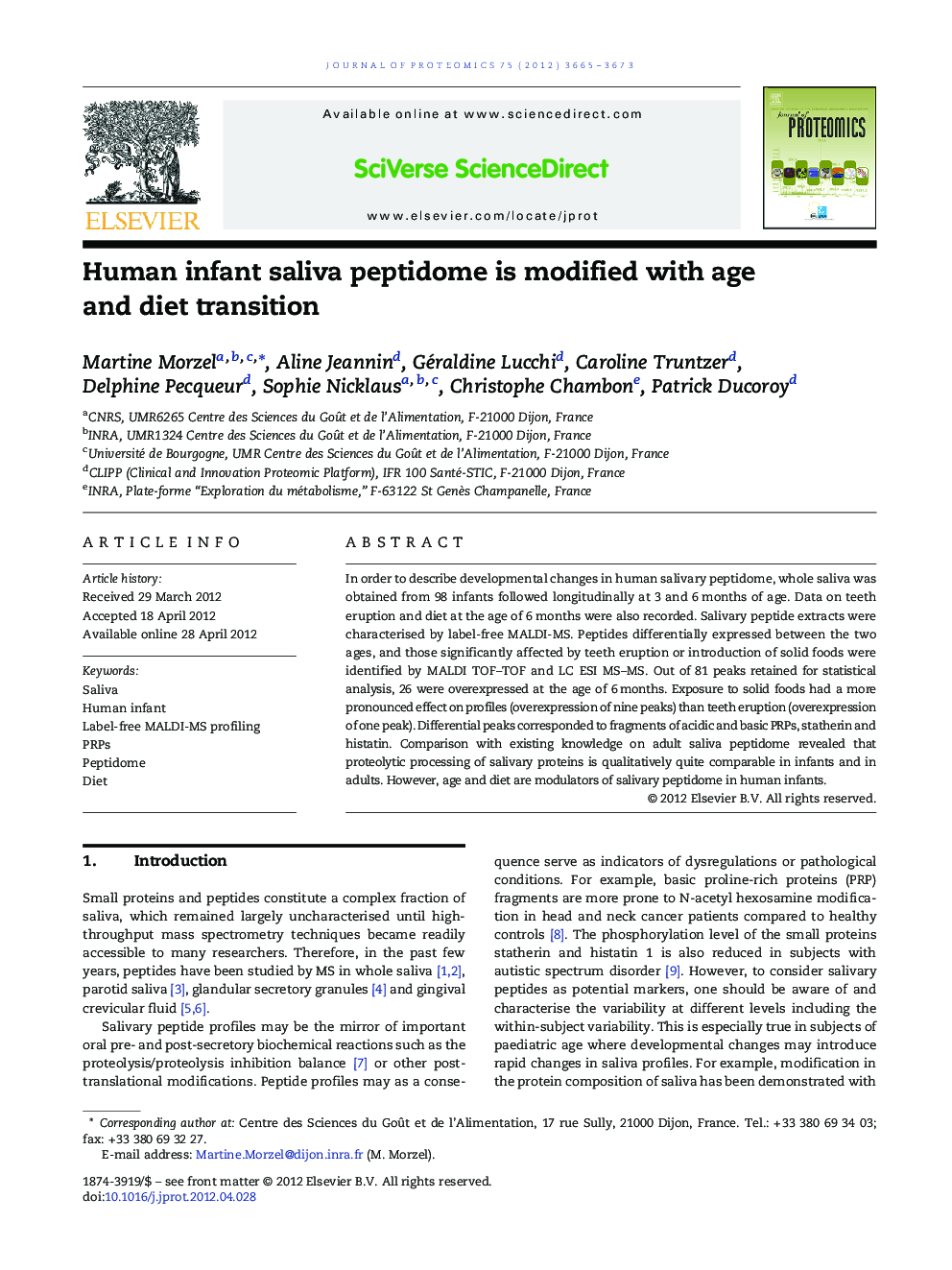| Article ID | Journal | Published Year | Pages | File Type |
|---|---|---|---|---|
| 1225631 | Journal of Proteomics | 2012 | 9 Pages |
In order to describe developmental changes in human salivary peptidome, whole saliva was obtained from 98 infants followed longitudinally at 3 and 6 months of age. Data on teeth eruption and diet at the age of 6 months were also recorded. Salivary peptide extracts were characterised by label-free MALDI-MS. Peptides differentially expressed between the two ages, and those significantly affected by teeth eruption or introduction of solid foods were identified by MALDI TOF–TOF and LC ESI MS–MS. Out of 81 peaks retained for statistical analysis, 26 were overexpressed at the age of 6 months. Exposure to solid foods had a more pronounced effect on profiles (overexpression of nine peaks) than teeth eruption (overexpression of one peak). Differential peaks corresponded to fragments of acidic and basic PRPs, statherin and histatin. Comparison with existing knowledge on adult saliva peptidome revealed that proteolytic processing of salivary proteins is qualitatively quite comparable in infants and in adults. However, age and diet are modulators of salivary peptidome in human infants.
Graphical abstractFigure optionsDownload full-size imageDownload high-quality image (146 K)Download as PowerPoint slideHighlights► Longitudinal changes in human infant salivary peptidome were studied. ► Proteolytic processing of saliva proteins is qualitatively comparable to that in adults. ► Profiles are substantially altered between 3 and 6 months of age. ► Teeth eruption and more importantly exposure to solid food modify salivary profiles. ► Some peptides upregulated by solid food may modulate in-mouth proteolysis.
